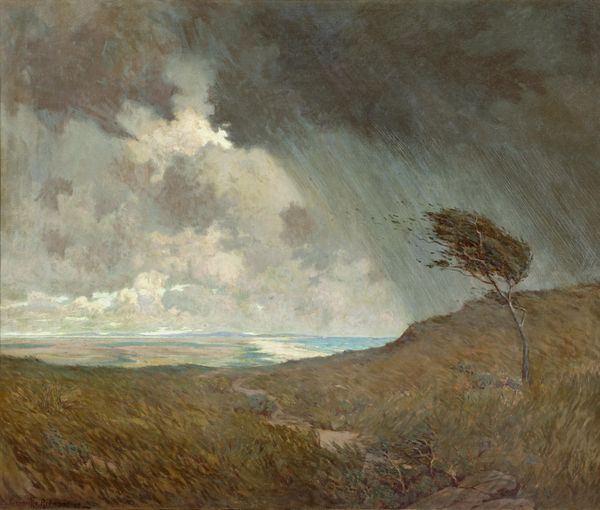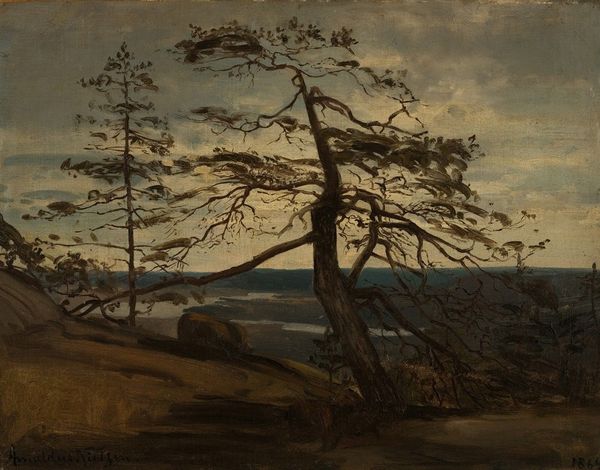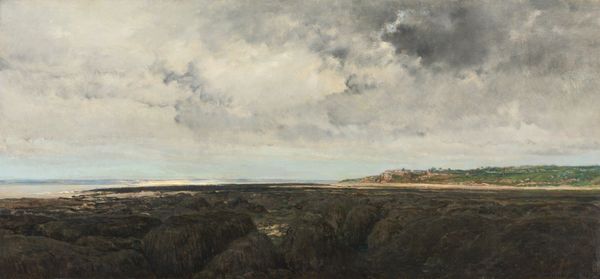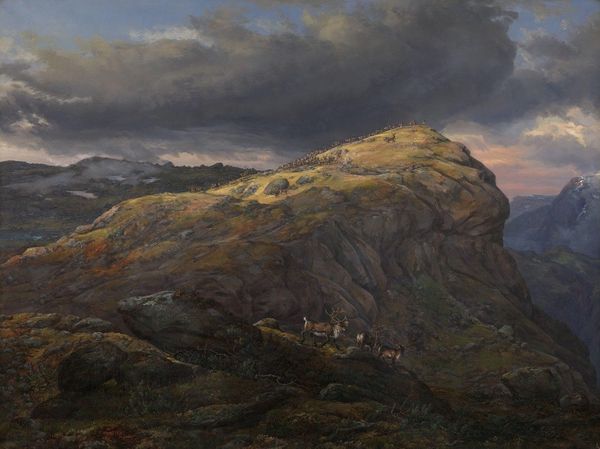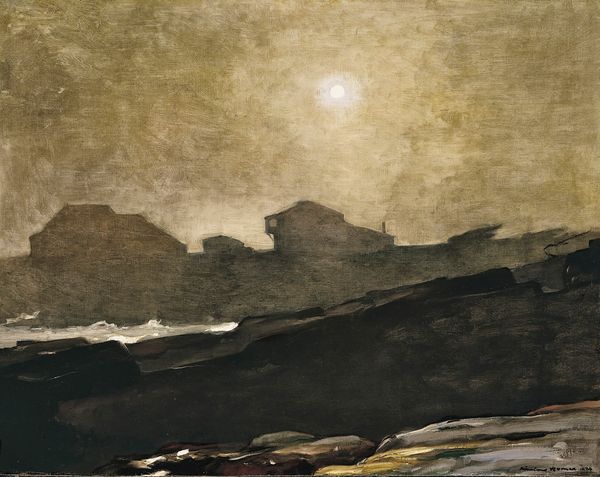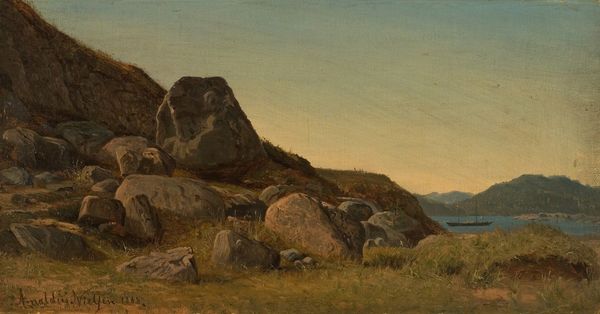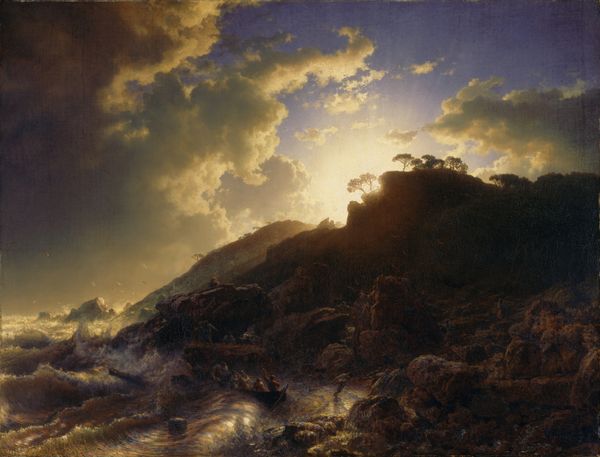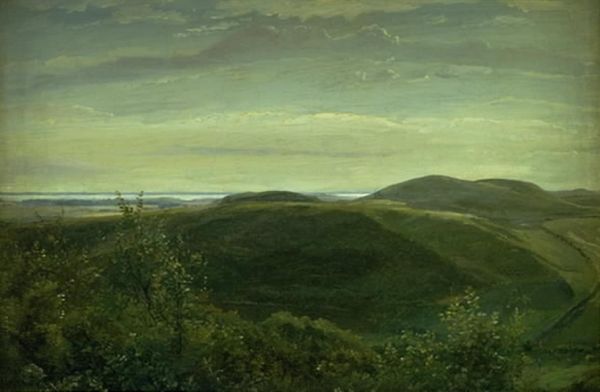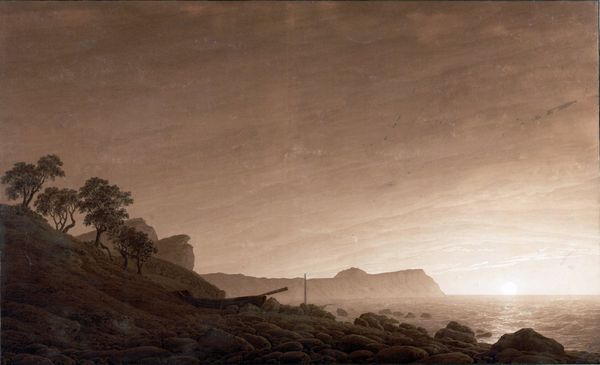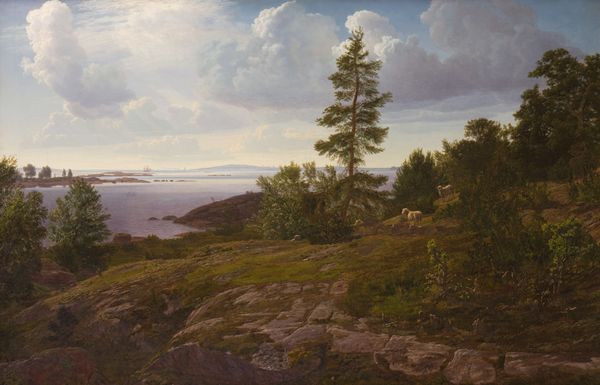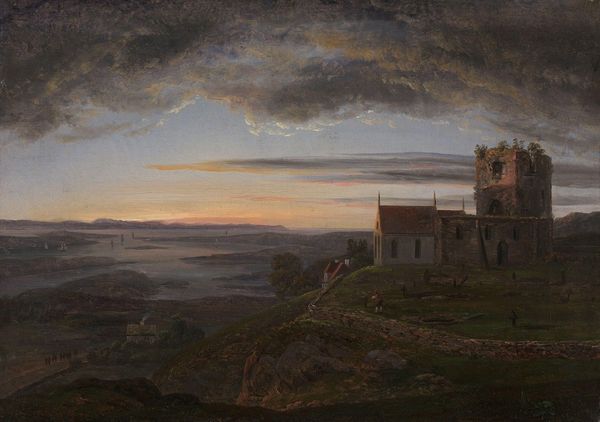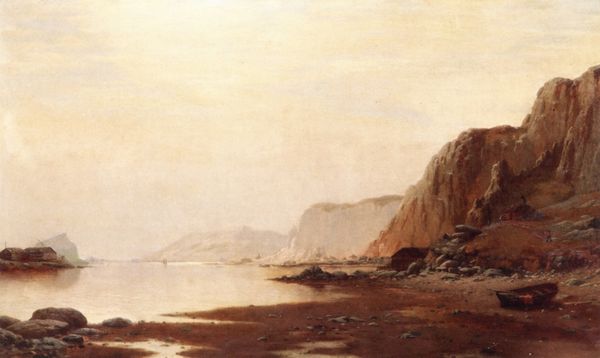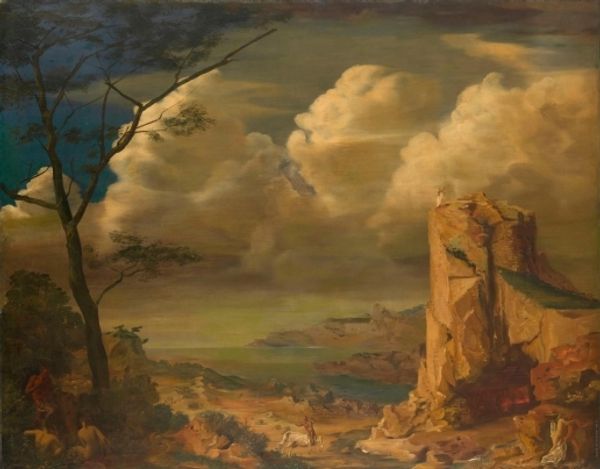
Copyright: Public Domain: Artvee
Curator: L.A. Ring, the Danish symbolist, created "After Sunset" in 1899 using oil paint. Editor: Immediately, I feel this incredible sense of foreboding. The looming darkness is quite heavy. Curator: Yes, the contrast is masterfully done. Look at the placement of the horizon line—it creates a powerful sense of depth, drawing the viewer’s eye across the terrain. The dramatic lighting and use of chiaroscuro underscore the painting’s internal structural relationships. Editor: It's true. The composition makes the observer question: What is at the boundary? Why is that building walled? And are those grave markers leading the way toward it? It has strong associations with social isolation at a time when many rural communities were undergoing rapid transformations. Curator: I would add, regarding form, that the textures in the rocks, achieved with impasto and dry brushing, really amplify a sense of solidity, a weight, that contrasts beautifully with the airy, luminous sky. The realism coupled with hints of romanticism provide further depth. Editor: Certainly. The landscape's subtle tonal shifts emphasize the profound interaction between the people who occupied it and the changing environmental and economic realities they were dealing with. I think the scene invites critical examination about wealth distribution. Who occupied that estate and who was laid to rest? Curator: You're considering sociological concerns. However, the muted colors and compositional structure draw you into the interplay between form and surface and the painting’s remarkable balance. Editor: But beyond aesthetics, what meaning emerges? I find myself contemplating the disparities embedded in this seemingly placid Danish landscape. How do past traumas still influence contemporary Danish society? Curator: While history and theory are important, I'm taken by the visual poetry Ring achieves. Editor: I see a landscape pregnant with unspoken narratives and the tension between progress and tradition. Curator: Ring's piece offers an intriguing lesson in pictorial structure. Editor: While simultaneously asking vital questions about community identity, loss, and who belongs.
Comments
No comments
Be the first to comment and join the conversation on the ultimate creative platform.
